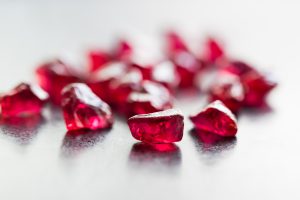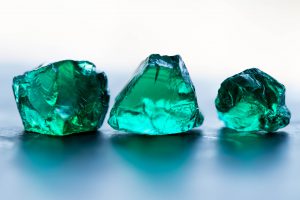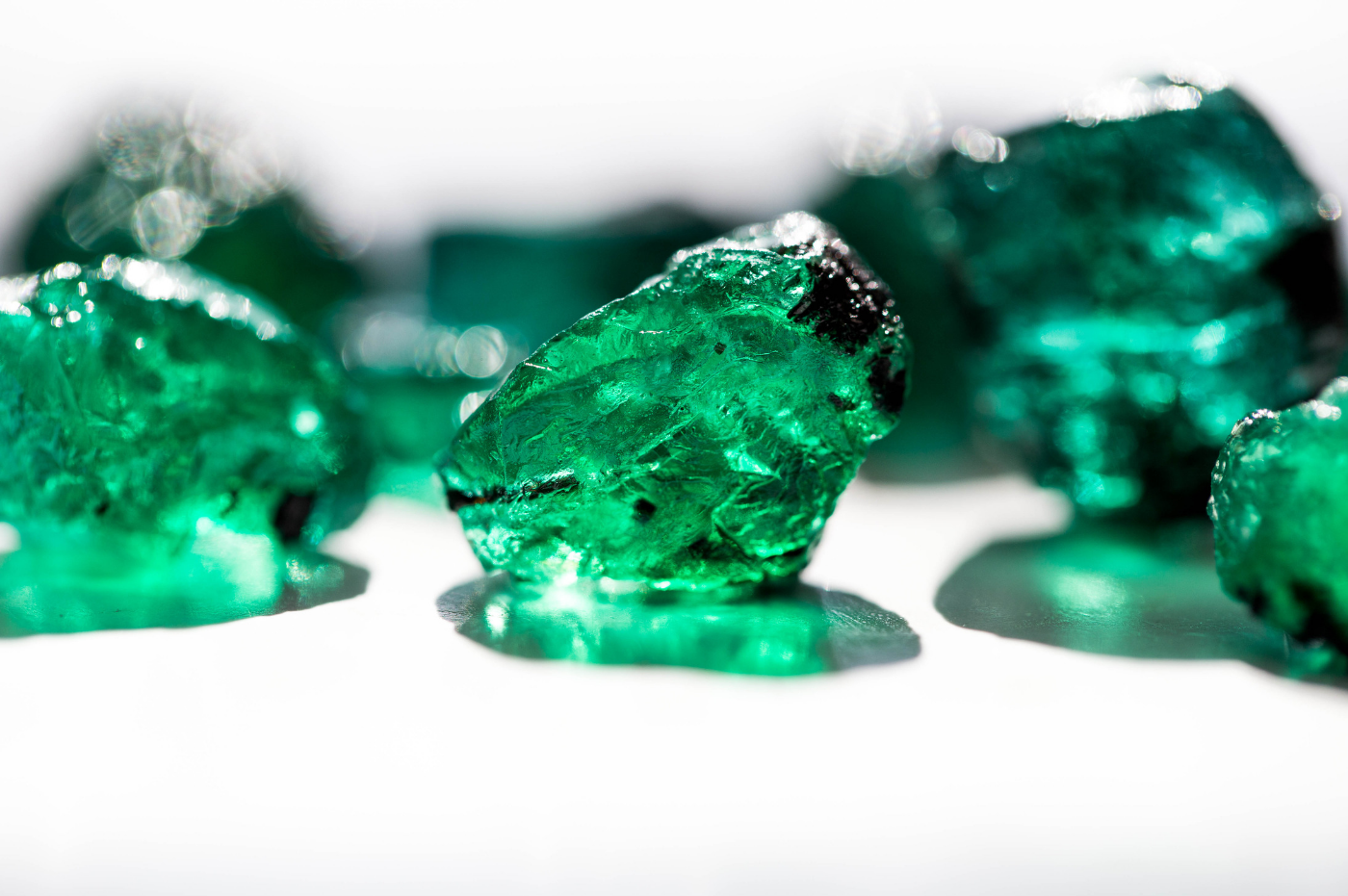Coloured gemstones are outperforming the wider jewellery market as collectable investments, reflecting the extraordinary beauty and rarity of some gems and exceptional provenance, according to the Knight Frank Luxury Investment Index (KFLII).
At the high-value jewellery auctions in Geneva in May, many lots surpassed pre-sale estimates, especially extremely rare coloured gemstones and diamonds.
A top selling lot at the Christie’s sale held at the Four Seasons Hotel des Bergues on May 15, was an extraordinarily rare ruby of 22.86 carats set in a ring by Harry Winston. Attracting dynamic bidding, the ring, which was the property of a princess, sold for $7.2 million to an anonymous buyer, well above its $2.0-3.0 million pre-sale estimate.

“Rubies are not easy to find in large sizes,” chief auctioneer Rahul Kadakia told IJL after the sale. “A ruby of almost 23 carats, old-mine cut, with royal provenance, Harry Winston – all of that put together, this is the perfect situation for an auction.”
Royal Provenance
A supremely rare emerald with royal provenance was another top performer.
The Imperial Emerald of the Grand Duchess Vladimir of Russia, a pear-shaped Colombian emerald necklace of 75.61 carats, which was presented in a glass showcase in the salesroom, sold for $4.34 million, well above its $2.3-3.5 million estimate.
“Top quality coloured stones are all making the same sort of uptick (in value) if they are of comparable quality,” Kadakia said.

The KFLII report said: “Coloured gemstones continue to outperform the wider jewellery market.”
Nevertheless, signed items from high jewellery brands, such as Van Cleef & Arpels, Cartier, Harry Winston and Bulgari, still garner remarkable sales prices.
One standout was a Van Cleef & Arpels Burmese ruby and diamond necklace, which sold at Christie’s Geneva in May for $2.4 million, several times its $400,000-600,000 estimate. A matching Van Cleef & Arpels Burmese ruby and diamond bracelet fetched $1.58 million, around 10 times its estimate.
“A big selection of rubies – some 150 carats of matched rubies in perfectly graduated sizes, old Burma material, in a Van Cleef & Arpels necklace which was probably created in the 1950s or 1960s when there was a greater abundance of finer material to put together. A perfect auction moment,” Kadakia said.
A multi-gem necklace by JAR (Joel Arthur Rosenthal) sold for a hammer price of $380,000, outstripping a $100,000-150,000 estimate.
Among coloured gemstones at the Sotheby’s Geneva sale in May, rubies scored impressive results. A ring by Bulgari, featuring a ruby of 5.14 carats surrounded by diamonds, sold for $1.69 million, beating its $1.25-1.35 million estimate. At Bonhams’ London sale at the end of April, several coloured gemstone lots blew away their estimates.
The top performer was a 17.43-carat Kashmir sapphire ring, formerly owned by a European noble family, that fetched £723,063, far exceeding its £300,000 to £400,000 guide price.
The second highest performing lot was a diamond and sapphire transformable necklace by Spanish jeweller Grassy. Dated to around 1935 and featuring a 34.59-carat Sri Lankan (no heat) sapphire, the necklace sold for £287,562, against its pre-sale estimate of £120,000 to £180,000.
History of Appreciation of Coloured Gems
The appreciation of coloured gemstones dates back centuries, if not millennia, when they were worn for their talismanic properties and believed to be gifts from the gods. Roman emperors and empresses would wear them to cement their status, power and wealth.
But the discovery of diamond mines in South Africa in the 1870s, followed by powerful marketing campaigns, saw the likes of emeralds and rubies usurped by diamonds as the supposed ultimate symbol of beauty, love and wealth.
Renewed Fascination in Coloured Gems
The past decade, however, has seen a resurgence in the popularity of coloured gemstones. Take a look at the jewellery of British royalty: the Duchess of Cambridge’s deep blue sapphire engagement ring; Meghan Markle’s aquamarine ring; Princess Eugenie’s coral Padparadscha sapphire ring and Boucheron emerald Kokoshnik tiara. Each has sparked countless imitations and inspired thousands to look beyond the traditional diamond.

In a Coloured Gemstones Special Report in the KFLII, Sean Gilbertson, CEO of coloured gemstone miner Gemfields, confirmed a markedly growing demand in the sector.
“The swing toward precious coloured gemstones is overwhelming, with robust demand prompting double-digit growth in many countries,” he said. “The past decade has seen the world record prices for an emerald and a ruby surpass that of a colourless diamond on a per carat basis. It surely can’t be long before sapphires overtake diamonds, too.”
Josina von dem Bussche-Kessell, global sales director at Fabergé, names two segments performing particularly well in the coloured gemstone market: “bespoke, custom-designed coloured gemstone jewellery pieces and everyday coloured gemstone designs.”
Much of the rising popularity of coloured gemstones is due to growing awareness (primarily via the internet and marketing) and developments that have boosted consumer confidence, such as widespread certification, more industry transparency, and gemmological analysis.
The discovery of new gemstone deposits in Mozambique and Zambia has seen a reliable supply of fine gemstones enter the market, spurring an increase in marketing. The power of this should not be underestimated.

In 1948, De Beers coined its “a diamond is forever” slogan to invent the modern-day engagement ring; in 2000, Le Vian saw sales rocket after rebranding previously dismissed brown diamonds as “chocolate” diamonds.
A comprehensive understanding is imperative to finding the right gem, too. Unlike diamonds, for example, where clarity is a crucial criterion, inclusions in coloured gemstones are accepted as these give each stone their unique character.
The latter is crucial, says Jean Ghika, global head of jewellery at Bonhams. “The rarity factor is an undeniable pull,” she said.
“Potential buyers are looking to expand their collections beyond colourless diamonds. They’re keen to seek out the very best examples of highly desirable and rare specimens, whether that be Kashmir sapphires, Burma rubies or no-oil emeralds, the likes of which they may never find again.”

